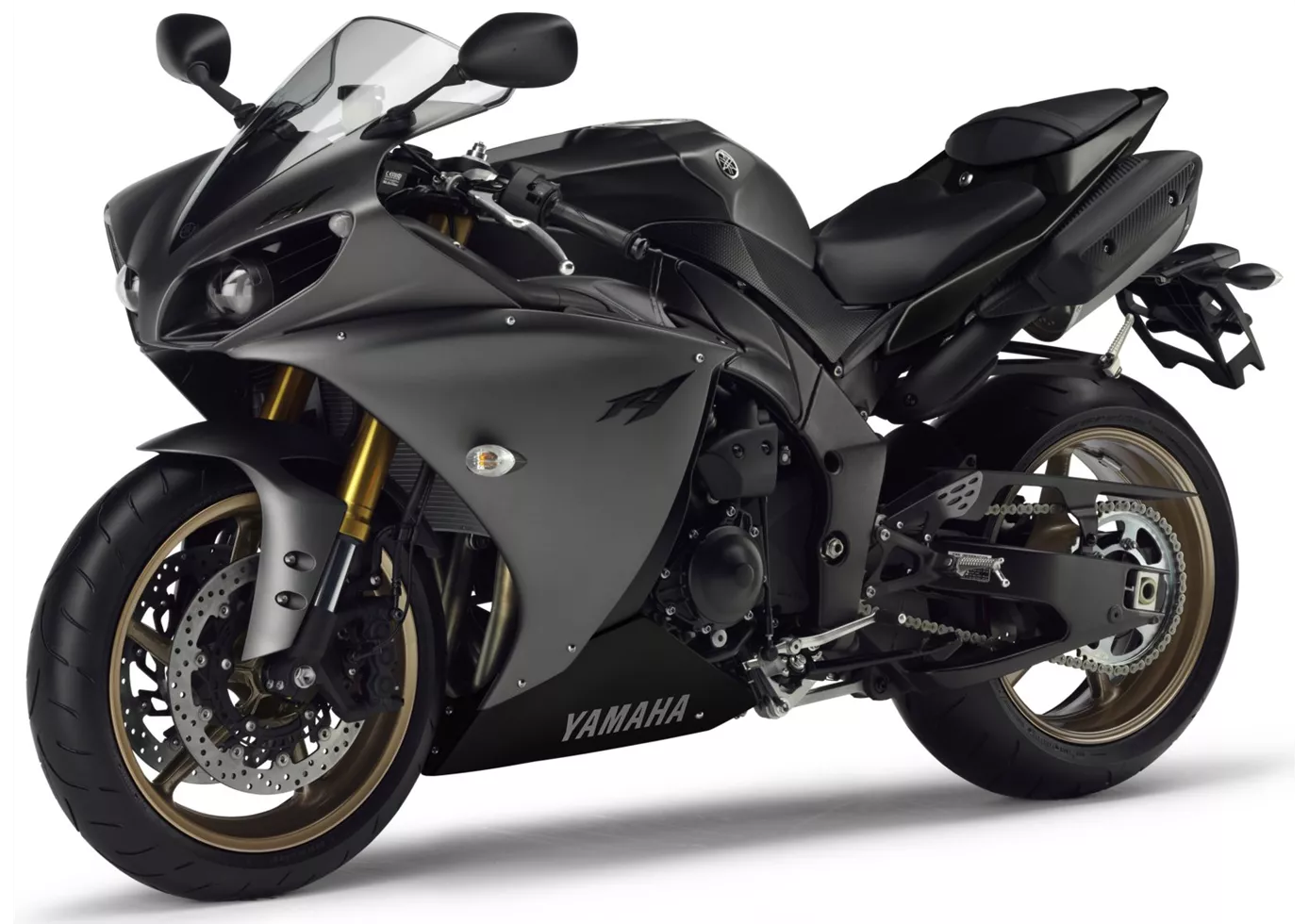BMW S 1000 RR 2016 vs. Yamaha R1 2014

BMW S 1000 RR 2016

Yamaha R1 2014
Vue d’ensemble - BMW S 1000 RR 2016 vs Yamaha R1 2014
The BMW S 1000 RR 2016 and the Yamaha R1 2014 are both high-performance supersport motorcycles that offer impressive specifications and features.
Starting with the engine and drive train, the BMW S 1000 RR 2016 has a bore of 80 mm and a stroke of 49.7 mm, while the Yamaha R1 2014 has a slightly smaller bore of 78 mm and a stroke of 52.2 mm. In terms of power, the BMW S 1000 RR 2016 takes the lead with 199 HP compared to the Yamaha R1 2014's 182 HP. However, the Yamaha R1 2014 has a higher torque of 115.5 Nm compared to the BMW S 1000 RR 2016's 113 Nm. Both motorcycles have 4 cylinders and a displacement of around 1000 cc, providing strong performance on the road.
Moving on to the suspension, the BMW S 1000 RR 2016 features a telescopic fork at the front, while the Yamaha R1 2014 has an upside-down telescopic fork. Both suspension systems offer excellent handling and stability, allowing for precise control during cornering and maneuvering.

BMW S 1000 RR 2016
In terms of chassis, both motorcycles have an aluminum frame, providing a lightweight and rigid structure. However, the BMW S 1000 RR 2016 has a twin tube frame, while the Yamaha R1 2014 features a Deltabox frame. Both frame types offer excellent stability and contribute to the overall agility of the motorcycles.
When it comes to braking, both the BMW S 1000 RR 2016 and the Yamaha R1 2014 are equipped with double disk brakes at the front. This ensures powerful and reliable stopping power, allowing riders to confidently control their speed.
In terms of dimensions and weights, both motorcycles have the same front and rear tire width of 120 mm and a diameter of 17 inches. The Yamaha R1 2014 has a slightly longer wheelbase of 1415 mm compared to the BMW S 1000 RR 2016's 1425 mm. The seat height of the Yamaha R1 2014 is also slightly higher at 835 mm, while the BMW S 1000 RR 2016 has a seat height of 815 mm. Both motorcycles have a fuel tank capacity of around 17-18 liters, providing a decent range for long rides.

Yamaha R1 2014
Now, let's discuss the strengths and weaknesses of each motorcycle. The BMW S 1000 RR 2016 stands out with its very powerful engine, delivering an impressive 199 HP. It also offers a comfortable seating position, allowing riders to enjoy long rides without feeling fatigued. Additionally, the BMW S 1000 RR 2016 features an excellent shift assistant, making gear changes smooth and effortless. However, some riders may find it somewhat sluggish in curves, which can affect the overall agility of the motorcycle.
On the other hand, the Yamaha R1 2014 is praised for its agility and nimble handling. It also features strong brakes, providing riders with confidence in their stopping power. The unique and exclusive design of the Yamaha R1 2014, particularly its idiosyncratic engine, sets it apart from other motorcycles in its class. However, some riders may not be satisfied with the appearance of the Yamaha R1 2014, particularly the wide tail.
In conclusion, both the BMW S 1000 RR 2016 and the Yamaha R1 2014 are impressive supersport motorcycles with their own strengths and weaknesses. The BMW S 1000 RR 2016 offers a very powerful engine and a comfortable seating position, while the Yamaha R1 2014 excels in agility and unique design. Ultimately, the choice between these two motorcycles will depend on the rider's preferences and priorities.
Caractéristiques techniques BMW S 1000 RR 2016 par rapport à Yamaha R1 2014
Avantages et inconvénients en comparaison
Avantages et inconvénients en comparaison
BMW S 1000 RR 2016

La S 1000 RR est le talent universel parmi les superbikes - on s'assoit dessus et on se sent tout de suite à l'aise. Même si, en comparaison, elle semble un peu nerveuse en termes de châssis et de stabilité. Mais elle transforme cela en une maniabilité agréable et facile et impressionne par son énorme puissance moteur. La roue avant devient en effet particulièrement légère et doit être calmée par l'amortisseur de direction. L'assistant de changement de vitesse pour monter et descendre les rapports est une fonction incroyablement sportive et confortable - elle apporte du calme au châssis et permet de se concentrer pleinement sur la conduite.
Yamaha R1 2014

La Yamaha YZF-R1 continue d'enthousiasmer par ses performances équilibrées - le moteur 1000 en particulier, avec son décalage extravagant des pivots de course, ne sert pas seulement à déployer une puissance énorme, mais assure également un son magnifique !
Comparaison des prix Prix moyen du marché BMW S 1000 RR vs Yamaha R1
There are a few key differences between a BMW S 1000 RR 2016 and a Yamaha R1 2014. There are the same number of bikes of both models available on the 1000PS.de marketplace, specifically 7. It takes less time to sell a BMW S 1000 RR with 69 days compared to 74 days for a Yamaha R1. Since model year 2010 1000PS.de editors have written 135 reviews for the BMW S 1000 RR and 80 reviews for the Yamaha R1 since model year 2005. The first review for the BMW S 1000 RR was published on 4/16/2008 and now has more than 4,000 views. This compares to more than 3,900 views for the first review on Yamaha R1 published on 4/28/2003.



















